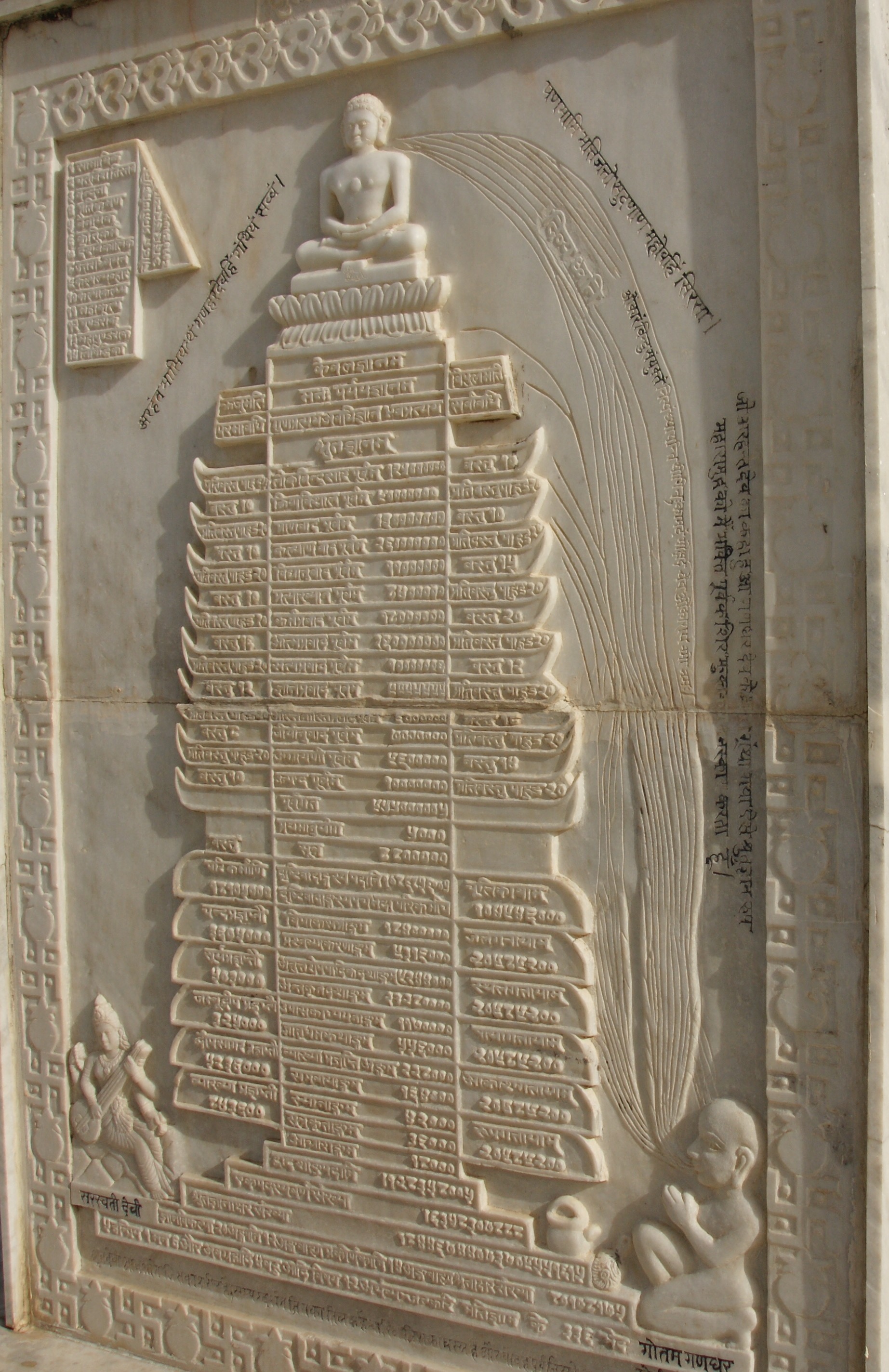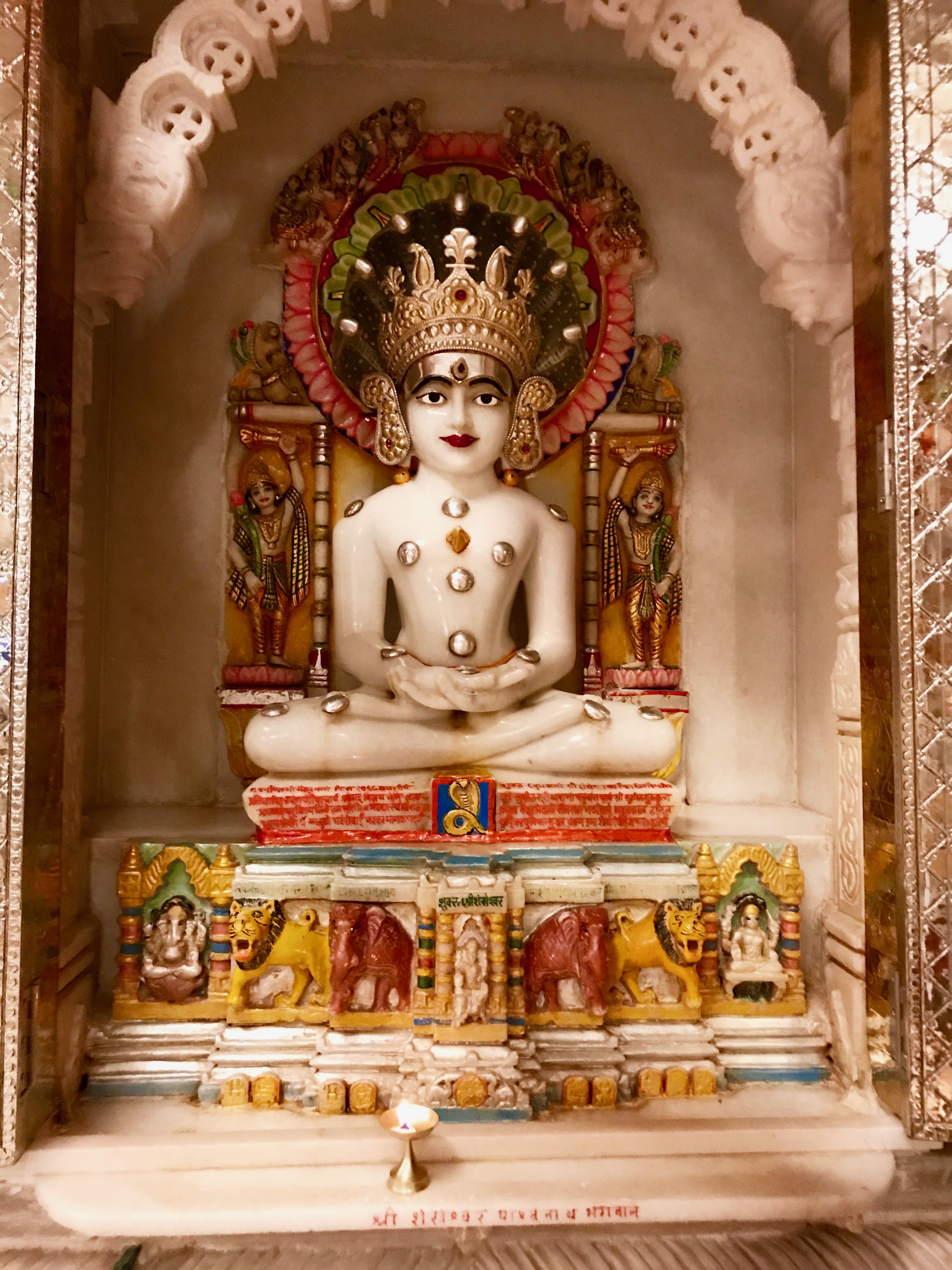|
Sutrakritanga
Sūtrakṛtāṅga सूत्रकृताङ्ग (also known in Prakrit as Sūyagaḍaṃga सूयगडंग) is the second agama of the 12 main aṅgās of the Jain Svetambara canon. According to the Svetambara tradition it was written by Gandhara Sudharmasvami in Ardhamagadhi Prakrit.The text is in two main parts: the first in verse and the second in prose. It is written using techniques including narration and questions and answers, and the chapters start with Sudharmasvami explaining the various doctrines to his chief disciple Jambuswami and answering his questions. According to Jain the text dates c. 4th-3rd century BCE, but Johannes Bronkhorst argues that due to the Buddhist material contained within this text, it cannot be later than the 2nd century BCE.Bronkhorst, Johannes. ''The Formative Period of Jainism (c. 500 BCE-200 CE)'', in "Brill's Encyclopedia of Jainism, 2020". Description This agama describes nonviolence, Jain metaphysics, and the refutati ... [...More Info...] [...Related Items...] OR: [Wikipedia] [Google] [Baidu] |
Jain Agamas
Jain literature (Sanskrit: जैन साहित्य) refers to the literature of the Jain religion. It is a vast and ancient literary tradition, which was initially transmitted orally. The oldest surviving material is contained in the canonical ''Jain Agamas,'' which are written in Ardhamagadhi, a Prakrit ( Middle-Indo Aryan) language. Various commentaries were written on these canonical texts by later Jain monks. Later works were also written in other languages, like Sanskrit and Maharashtri Prakrit. Jain literature is primarily divided between the canons of the ''Digambara'' and '' Śvētāmbara'' orders. These two main sects of Jainism do not always agree on which texts should be considered authoritative. More recent Jain literature has also been written in other languages, like Marathi, Tamil, Rajasthani, Dhundari, Marwari, Hindi, Gujarati, Kannada, Malayalam and more recently in English. Beliefs The Jain tradition believes that their religion is eternal, an ... [...More Info...] [...Related Items...] OR: [Wikipedia] [Google] [Baidu] |
Jainism
Jainism ( ), also known as Jain Dharma, is an Indian religion. Jainism traces its spiritual ideas and history through the succession of twenty-four tirthankaras (supreme preachers of ''Dharma''), with the first in the current time cycle being Rishabhadeva, whom the tradition holds to have lived millions of years ago, the twenty-third ''tirthankara'' Parshvanatha, whom historians date to the 9th century BCE, and the twenty-fourth ''tirthankara'' Mahavira, around 600 BCE. Jainism is considered to be an eternal ''dharma'' with the ''tirthankaras'' guiding every time cycle of the cosmology. The three main pillars of Jainism are ''ahiṃsā'' (non-violence), ''anekāntavāda'' (non-absolutism), and ''aparigraha'' (asceticism). Jain monks, after positioning themselves in the sublime state of soul consciousness, take five main vows: ''ahiṃsā'' (non-violence), ''satya'' (truth), ''asteya'' (not stealing), ''brahmacharya'' (chastity), and ''aparigraha'' (non-possessiveness). These pr ... [...More Info...] [...Related Items...] OR: [Wikipedia] [Google] [Baidu] |
Śvētāmbara
The Śvētāmbara (; ''śvētapaṭa''; also spelled ''Shwethambara'', ''Svetambar'', ''Shvetambara'' or ''Swetambar'') is one of the two main branches of Jainism, the other being the ''Digambara''. Śvētāmbara means "white-clad", and refers to its ascetics' practice of wearing white clothes, which sets it apart from the ''Digambara'' "sky-clad" Jains, whose ascetic practitioners go naked. Śvētāmbaras, unlike Digambaras, do not believe that ascetics must practice nudity. The Svetambara and Digambara traditions have had historical differences ranging from their dress code, their temples and iconography, attitude towards Jain nuns, their legends and the texts they consider as important. Svetambara Jain communities are currently found mainly in Gujarat, Rajasthan and coastal regions of Maharashtra. According to Jeffery D. Long, a scholar of Hindu and Jain studies, about four-fifths of all Jains in India are Svetambaras. History Majority of the Svetambaras are ''murtipuj ... [...More Info...] [...Related Items...] OR: [Wikipedia] [Google] [Baidu] |
Gandhara
Gandhāra is the name of an ancient region located in the northwestern region of the Indian subcontinent, more precisely in present-day north-west Pakistan and parts of south-east Afghanistan. The region centered around the Peshawar Valley and Swat river valley, though the cultural influence of "Greater Gandhara" extended across the Indus river to the Taxila region in Potohar Plateau and westwards into the Kabul Valley in Afghanistan, and northwards up to the Karakoram range. Gandhara has a deep rooted history of Hinduism mentioned in Indian scripts and epics including Rig Veda, Ramayana and Mahabharata. Famed for its unique Gandharan style of art which is influenced by the classical Hellenistic styles, Gandhara attained its height from the 1st century to the 5th century CE under the Kushan Empire, who had their capital at Peshawar (''Puruṣapura''). Gandhara "flourished at the crossroads of India, Central Asia, and the Middle East," connecting trade routes an ... [...More Info...] [...Related Items...] OR: [Wikipedia] [Google] [Baidu] |
Sudharma Swami
Sudharmaswami ( sa, Sudharmāsvāmī or Sudharman; 607 BC – 507 BC) was the fifth ganadhara of Mahavira. All the current Jain acharyas and monks follow his rule. Life Sudharmaswami was the spiritual successor of Indrabhuti Gautama in religious order reorganised by Mahavira. He is traditionally dated from 607 to 506 BCE. He is believed in Jain tradition to have obtained omniscience after 12 years in 515 BC. He is believed to have attained nirvana in 507 BC at the age of 100. The leadership of religious order was then transferred to Jambuswami who served for 44 years and was the last Ghandhara who survived after kaal(death) of Mahavira For Jains, their scriptures represent the literal words of Mahavira and the other tirthankaras only to the extent that the agama is a series of beginning-less, endless and fixed truths, a tradition without any origin, human or divine, which in this world age has been channelled through Sudharmāsvāmī. See also * Jain monasticism Jain mo ... [...More Info...] [...Related Items...] OR: [Wikipedia] [Google] [Baidu] |
Jain Prakrit
The Prakrits (; sa, prākṛta; psu, 𑀧𑀸𑀉𑀤, ; pka, ) are a group of vernacular Middle Indo-Aryan languages that were used in the Indian subcontinent from around the 3rd century BCE to the 8th century CE. The term Prakrit is usually applied to the middle period of Middle Indo-Aryan languages, excluding earlier inscriptions and the later Pali. ''Prākṛta'' literally means "natural", as opposed to '' saṃskṛta'', which literally means "constructed" or "refined". Prakrits were considered the regional spoken (informal) languages of people, and Sanskrit was considered the standardized (formal) language used for literary, official and religious purposes across Indian kingdoms of the subcontinent. Literary registers of Prakrits were also used contemporaneously (predominantly by śramaṇa traditions) alongside Classical Sanskrit of higher social classes. Etymology The dictionary of Monier Monier-Williams (1819–1899), and other modern authors however, interpret ... [...More Info...] [...Related Items...] OR: [Wikipedia] [Google] [Baidu] |
Prakrit
The Prakrits (; sa, prākṛta; psu, 𑀧𑀸𑀉𑀤, ; pka, ) are a group of vernacular Middle Indo-Aryan languages that were used in the Indian subcontinent from around the 3rd century BCE to the 8th century CE. The term Prakrit is usually applied to the middle period of Middle Indo-Aryan languages, excluding earlier inscriptions and the later Pali. ''Prākṛta'' literally means "natural", as opposed to '' saṃskṛta'', which literally means "constructed" or "refined". Prakrits were considered the regional spoken (informal) languages of people, and Sanskrit was considered the standardized (formal) language used for literary, official and religious purposes across Indian kingdoms of the subcontinent. Literary registers of Prakrits were also used contemporaneously (predominantly by śramaṇa traditions) alongside Classical Sanskrit of higher social classes. Etymology The dictionary of Monier Monier-Williams (1819–1899), and other modern authors however, interpr ... [...More Info...] [...Related Items...] OR: [Wikipedia] [Google] [Baidu] |
Jambuswami
Jambuswami (543-449 BCE) was the spiritual successor of Sudharmaswami in Jain religious order reorganised by Mahavira. He remained the head for 39 or 44 years, after which he is believed to have gained '' Kevala Jnana'' (omniscience). He is believed to be the third and last '' kevali'' (omniscient being) after Mahavira in Jain tradition. He is believed to have attained ''moksha'' (liberated) at the age of 84 in Mathura. Jambu was succeeded by Prabhava (443-338 BCE), who was converted from a bandit Banditry is a type of organized crime committed by outlaws typically involving the threat or use of violence. A person who engages in banditry is known as a bandit and primarily commits crimes such as extortion, robbery, and murder, either as an ... by him. Prabhava was succeeded by Shayyambhava (377-315 BCE). Shayyambhava composed ''Dasavaikalika sutra'' after studying the fourteen ''purvas'' (pre-canonical texts). He was initiated as a Jain monk. He initiated his son as a monk ... [...More Info...] [...Related Items...] OR: [Wikipedia] [Google] [Baidu] |
Johannes Bronkhorst
Johannes Bronkhorst (born 17 July 1946, Schiedam) is a Dutch Orientalist and Indologist, specializing in Buddhist studies and early Buddhism. He is emeritus professor at the University of Lausanne. Life After studying Mathematics, Physics, and Astronomy at the Vrije Universiteit in Amsterdam (B.Sc. 1968), he moved to India, where he turned to Sanskrit and Pāli, first at the University of Rajasthan (Jaipur), then the University of Pune (M.A. 1976, Ph.D. 1979). In Pune he read with traditional Sanskrit scholars, specializing in Sanskrit grammar and Indian philosophy. Back in the Netherlands, he did a second doctorate (1980) at the University of Leiden. Having worked for research projects funded by the Nederlandse Organisatie voor Wetenschappelijk Onderzoek, he was appointed in 1987 to the position of Professor of Sanskrit and Indian studies at the University of Lausanne. He retired in 2011. Work Bronkhorst has concentrated on the history of Indian thought and published o ... [...More Info...] [...Related Items...] OR: [Wikipedia] [Google] [Baidu] |



